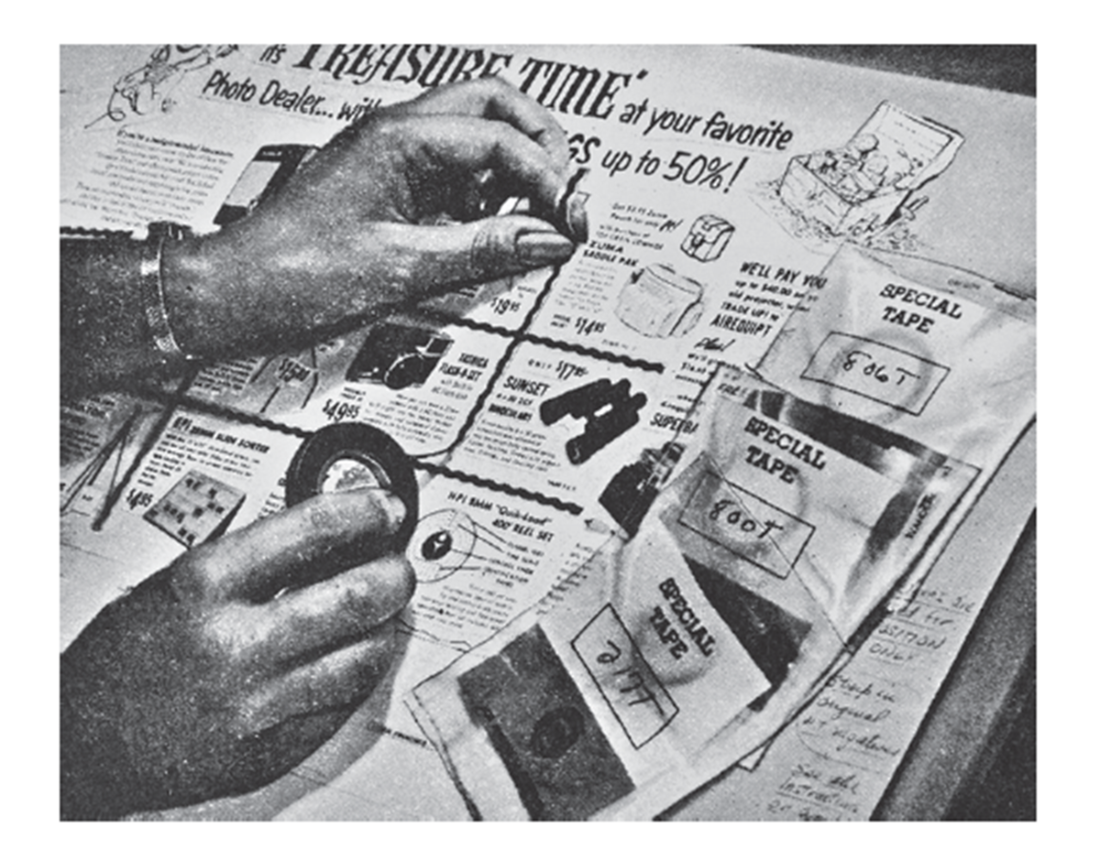11 Out into the world
This chapter covers
- Producing final output for a book
- Print and eBook formats
- What’s in a PDF
We have seen how to define shapes for characters and graphics and how arrays of colored pixels are used to represent photographs digitally. We have combined characters into words and those words into paragraphs. But how do we get our creation into the hands of the reader?
If the book is to be printed, we must send it to the printer: What will they require to ensure it looks on the paper just as we see it on the screen? If we are delivering it electronically to the reader as an eBook, how do we produce it in the format required by the eBook reader? In this chapter, we answer these questions.
11.1 Final output for printing
In the previous chapter, we looked at traditional metal typesetting, but let’s look nearer to the present day, just before computer publishing as we know it took over in the late 20th century. Figure 11.1 shows a page of adverts being “pasted up” (i.e., pieces of text, line art, and images being glued onto a piece of paper to make the final layout). The individual pieces might have been text printed via other mechanisms, hand-drawn images, or photographs. Images that needed to be made larger or smaller would have been photographically enlarged or shrunk prior to the final paste-up. As you can imagine, the paste-up process was lengthy and error prone.
Figure 11.1 Pasting up a page
